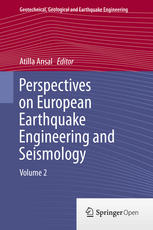

Most ebook files are in PDF format, so you can easily read them using various software such as Foxit Reader or directly on the Google Chrome browser.
Some ebook files are released by publishers in other formats such as .awz, .mobi, .epub, .fb2, etc. You may need to install specific software to read these formats on mobile/PC, such as Calibre.
Please read the tutorial at this link: https://ebookbell.com/faq
We offer FREE conversion to the popular formats you request; however, this may take some time. Therefore, right after payment, please email us, and we will try to provide the service as quickly as possible.
For some exceptional file formats or broken links (if any), please refrain from opening any disputes. Instead, email us first, and we will try to assist within a maximum of 6 hours.
EbookBell Team

4.3
38 reviewsThis book collects 4 keynote and 15 theme lectures presented at the 2nd European Conference on Earthquake Engineering and Seismology (2ECEES), held in Istanbul, Turkey, from August 24 to 29, 2014. The conference was organized by the Turkish Earthquake Foundation - Earthquake Engineering Committee and Prime Ministry, Disaster and Emergency Management Presidency under the auspices of the European Association for Earthquake Engineering (EAEE) and European Seismological Commission (ESC).
The book’s nineteen state-of-the-art chapters were written by the most prominent researchers in Europe and address a comprehensive collection of topics on earthquake engineering, as well as interdisciplinary subjects such as engineering seismology and seismic risk assessment and management. Further topics include engineering seismology, geotechnical earthquake engineering, seismic performance of buildings, earthquake-resistant engineering structures, new techniques and technologies, and managing risk in seismic regions. The book also presents the First Professor Inge Lehmann Distinguished Award Lecture given by Prof. Shamita Das in honor of Prof. Dr. Inge Lehmann.
The aim of this work is to present the state-of-the art and latest practices in the fields of earthquake engineering and seismology, with Europe’s most respected researchers addressing recent and ongoing developments while also proposing innovative avenues for future research and development. Given its cutting-edge conten
t and broad spectrum of topics, the book offers a unique reference guide for researchers in these fields.Audience:
This book is of interest to civil engineers in the fields of geotechnical and structural earthquake engineering; scientists and researchers in the fields of seismology, geology and geophysics. Not only scientists, engineers and students, but also those interested in earthquake hazard assessment and mitigation will find in this book the most recent advances.